Disable Server Manager Autostart in Windows Server 2019
This article is for those looking for a detailed and clear guide on how to disable Server Manager autostart in Windows Server 2019.
You can find out how to disable Server Manager autostart in Windows Server 2012 R2 by reading “Disable Server Manager Autostart in Windows Server 2012 R2”.
This guide will cover several ways on how to disable the automatic start of Server Manager in Windows Server 2019.
We go into the system under an account with administrator rights.
Open Server Manager, click on the “Manage” button in the upper right corner of the screen, and select “Server Manager Properties”.
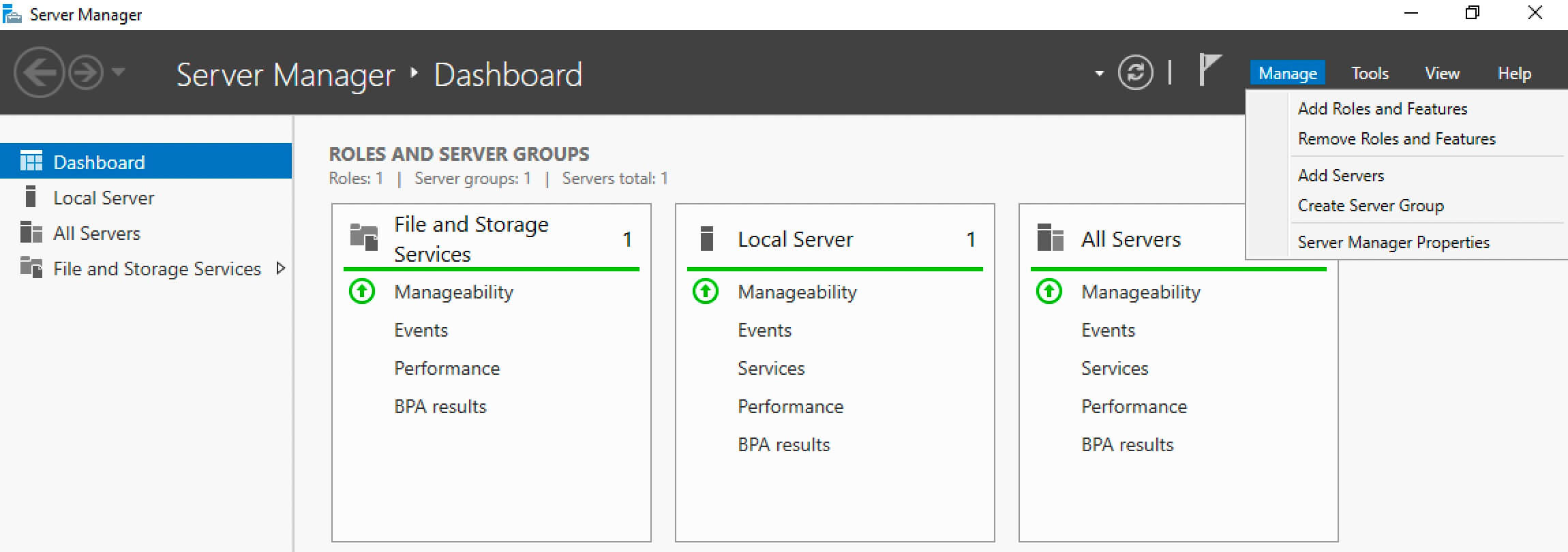
Check the box “Do not start Server Manager automatically at logon” and click on the “OK” button.
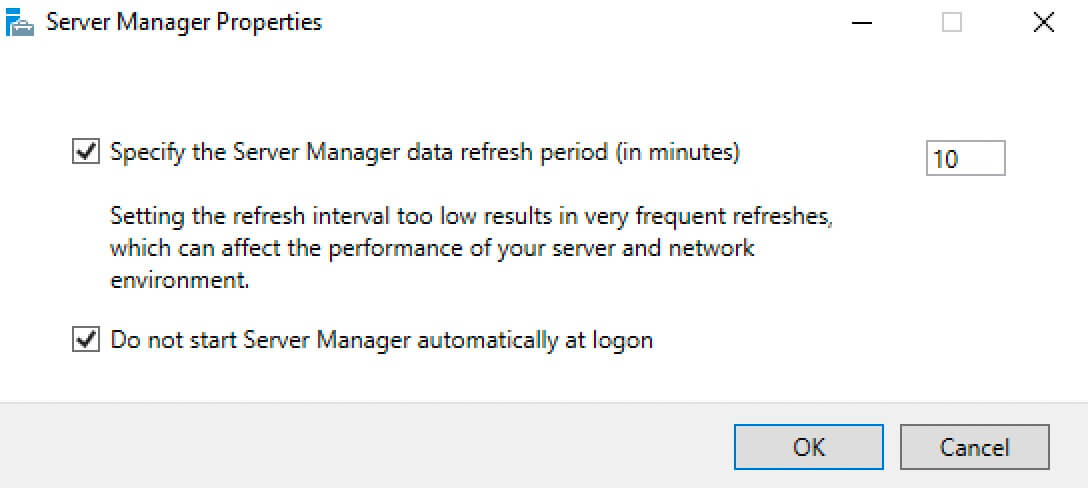
Server Manager will no longer start automatically.
You can also disable the automatic start of “Server Manager” through the task scheduler. To do this, you must disable the task that is responsible for the automatic start of “Server Manager”.
In Server Manager, click on the “Tools” button in the upper right corner of the screen and select “Task Scheduler”.
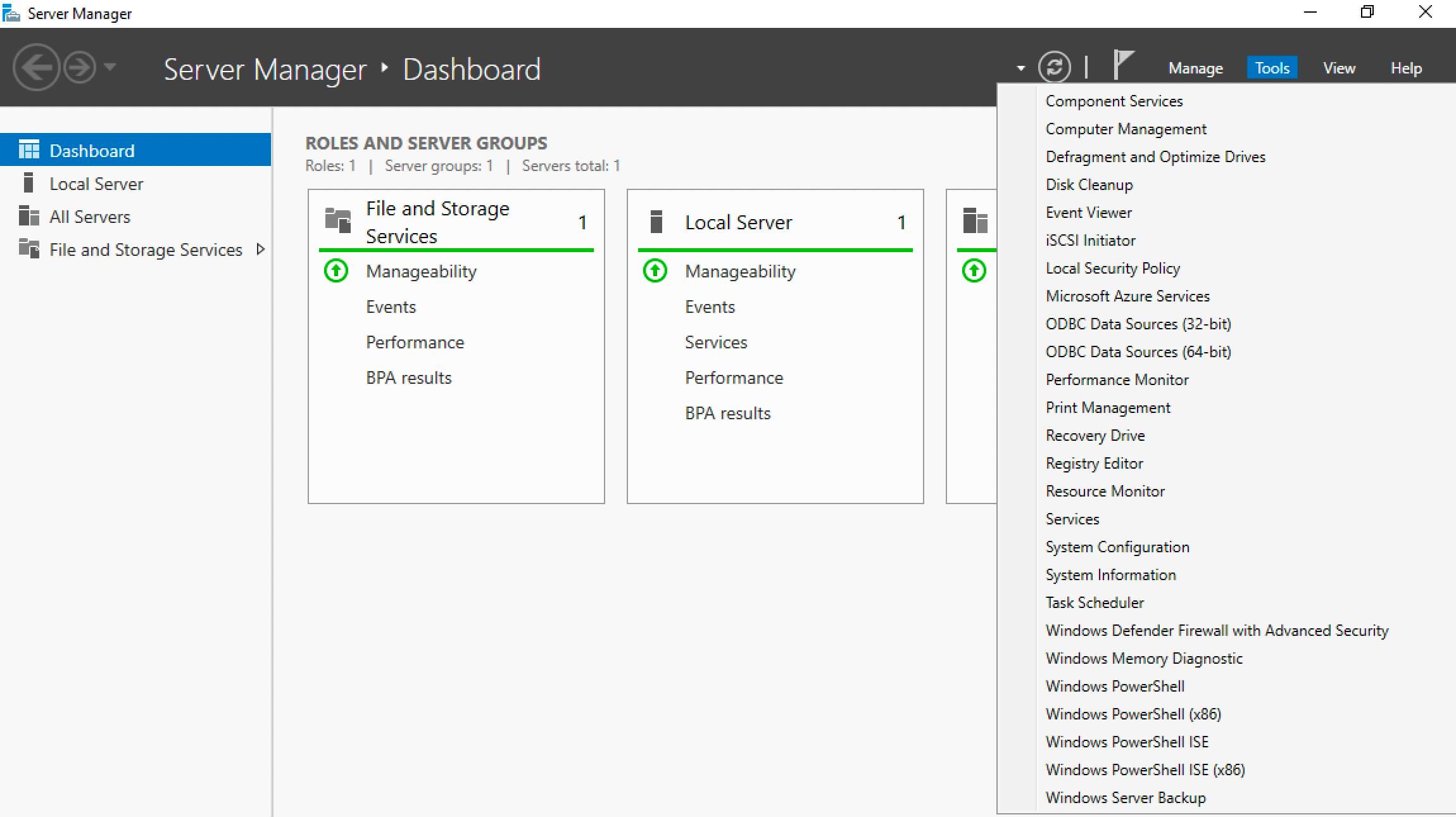
In the “Task Scheduler Library” go to the “Microsoft” section, then to “Windows”, and in the “Server Manager” subsection, select the “Server Manager” task.
In the “Actions” menu, click on the “Disable” button.
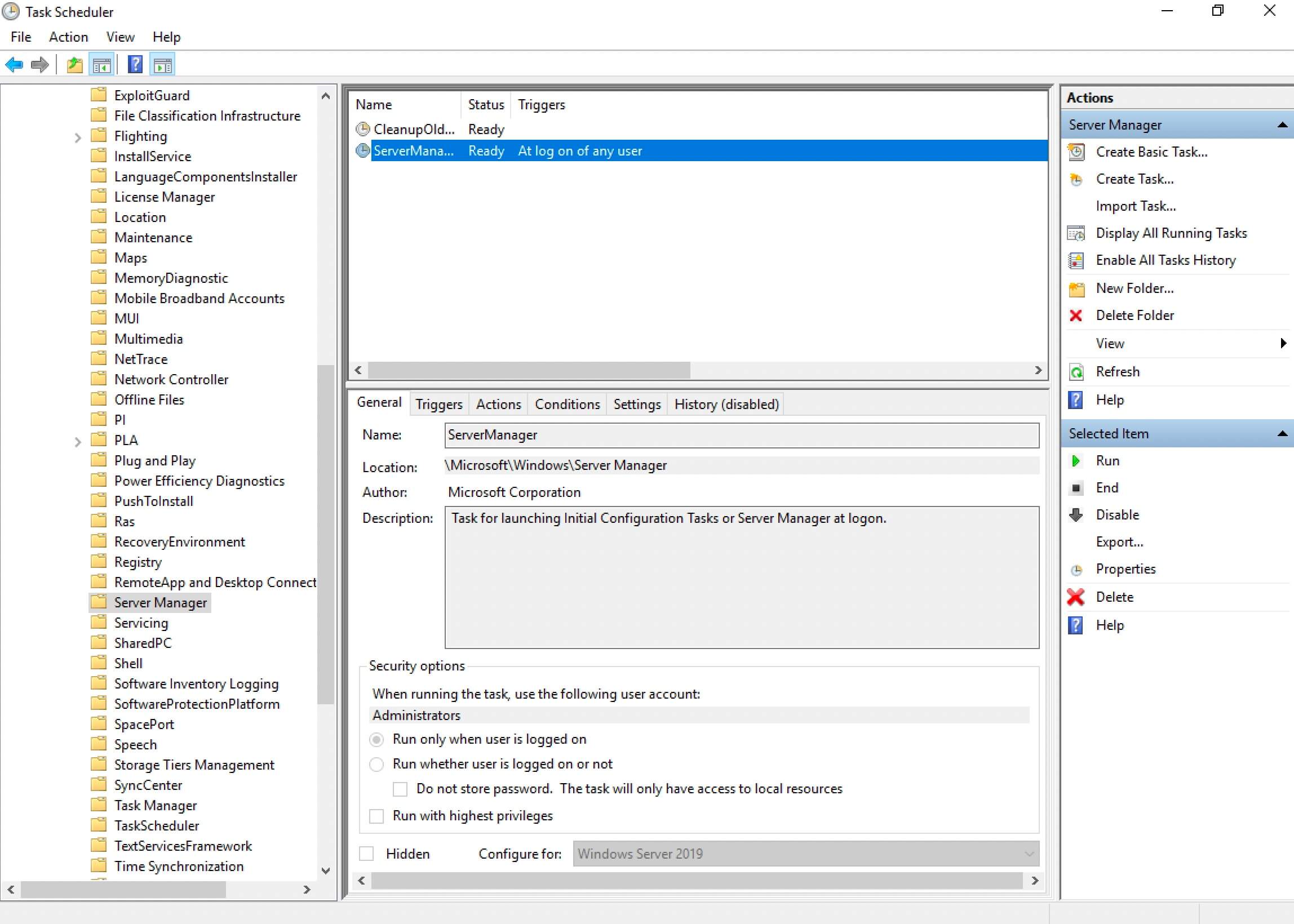
Server Manager will no longer start automatically.
In addition, you can disable the task that is responsible for automatically starting Server Manager using the command line.
Press “Start”, specify “cmd” in the search bar, and select “Command Prompt”.
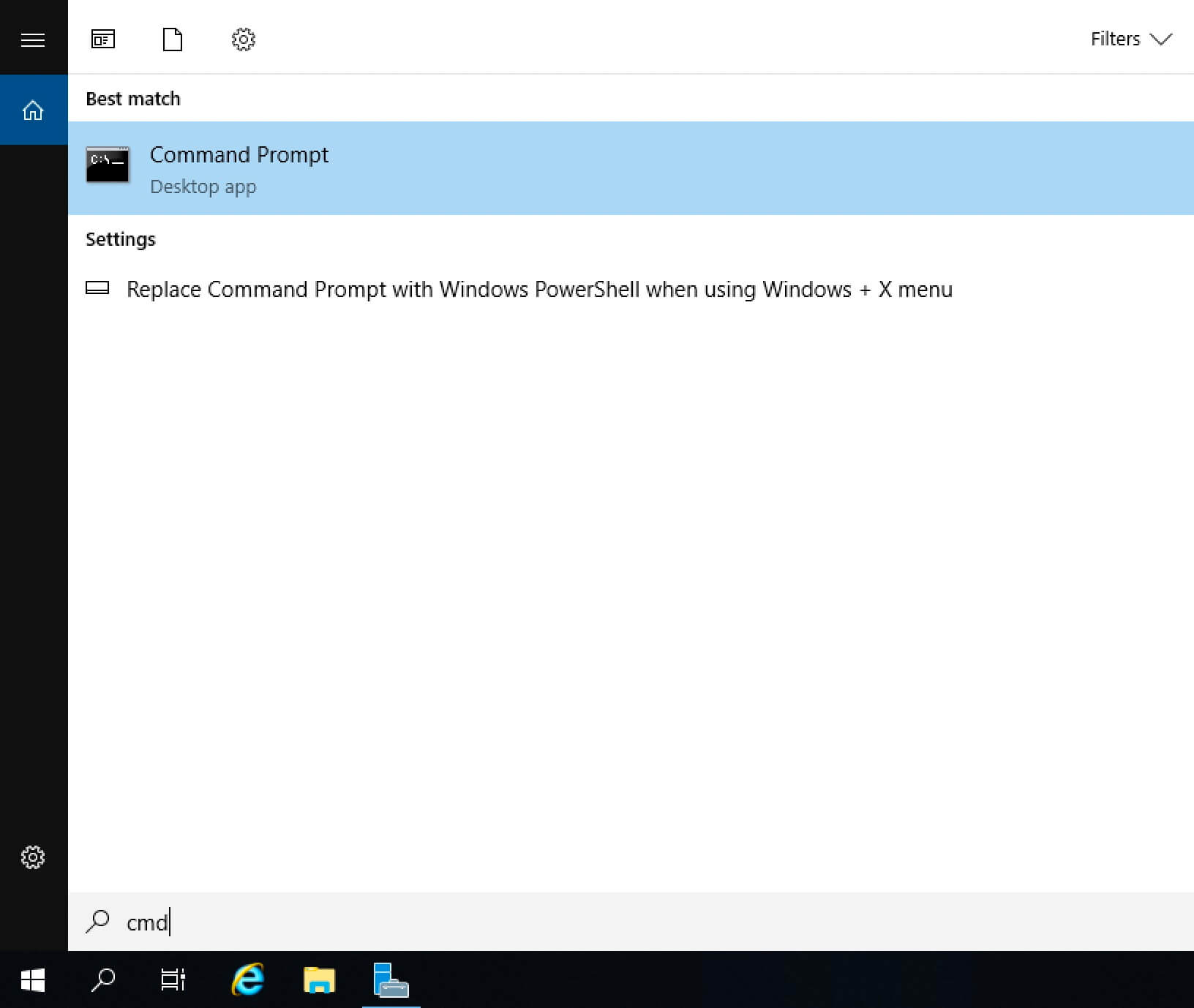
Disable Server Manager autostart using the command:
schtasks /Change /TN "Microsoft\Windows\Server Manager\ServerManager" /Disable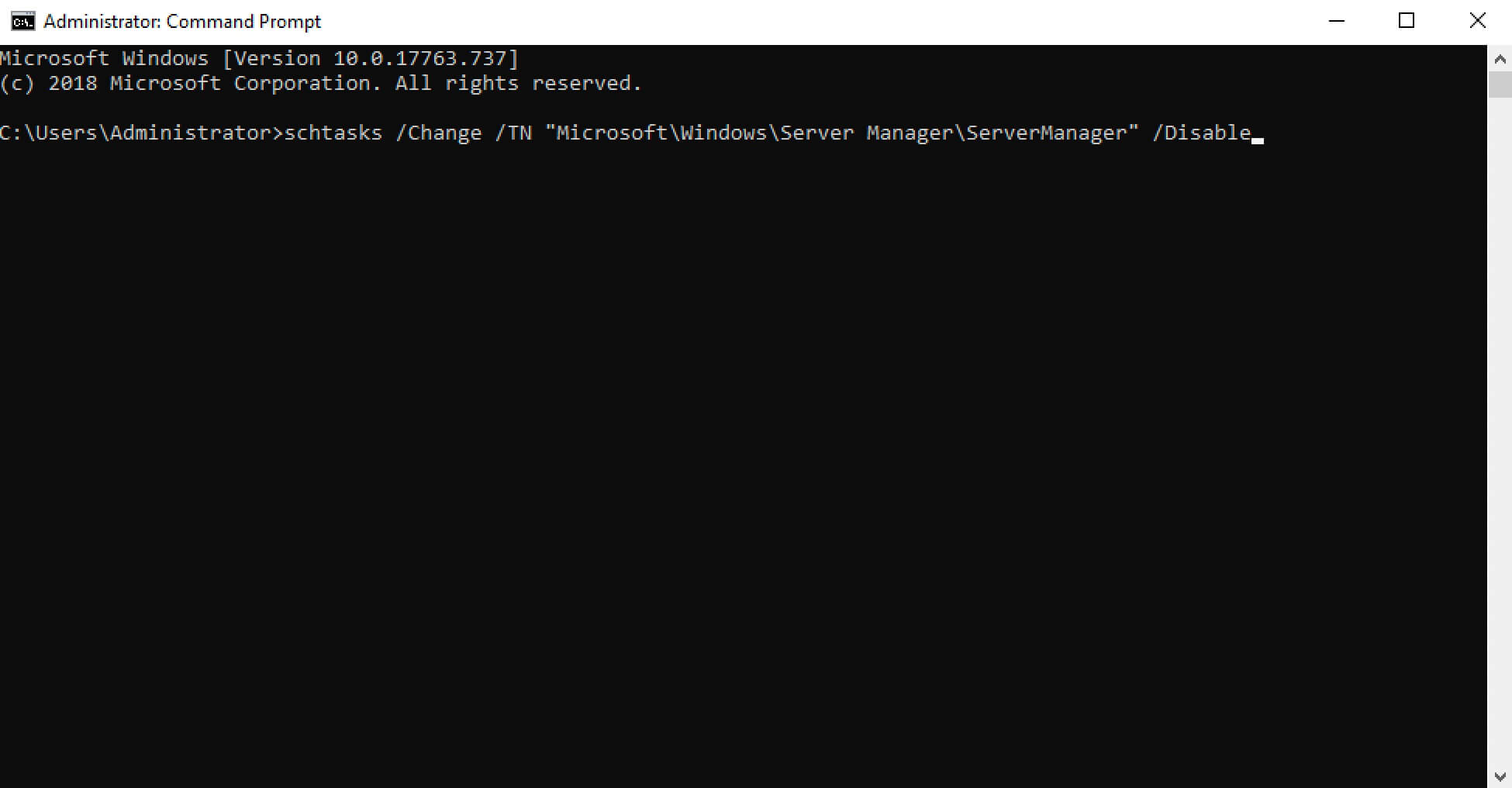
Server Manager will no longer start automatically.
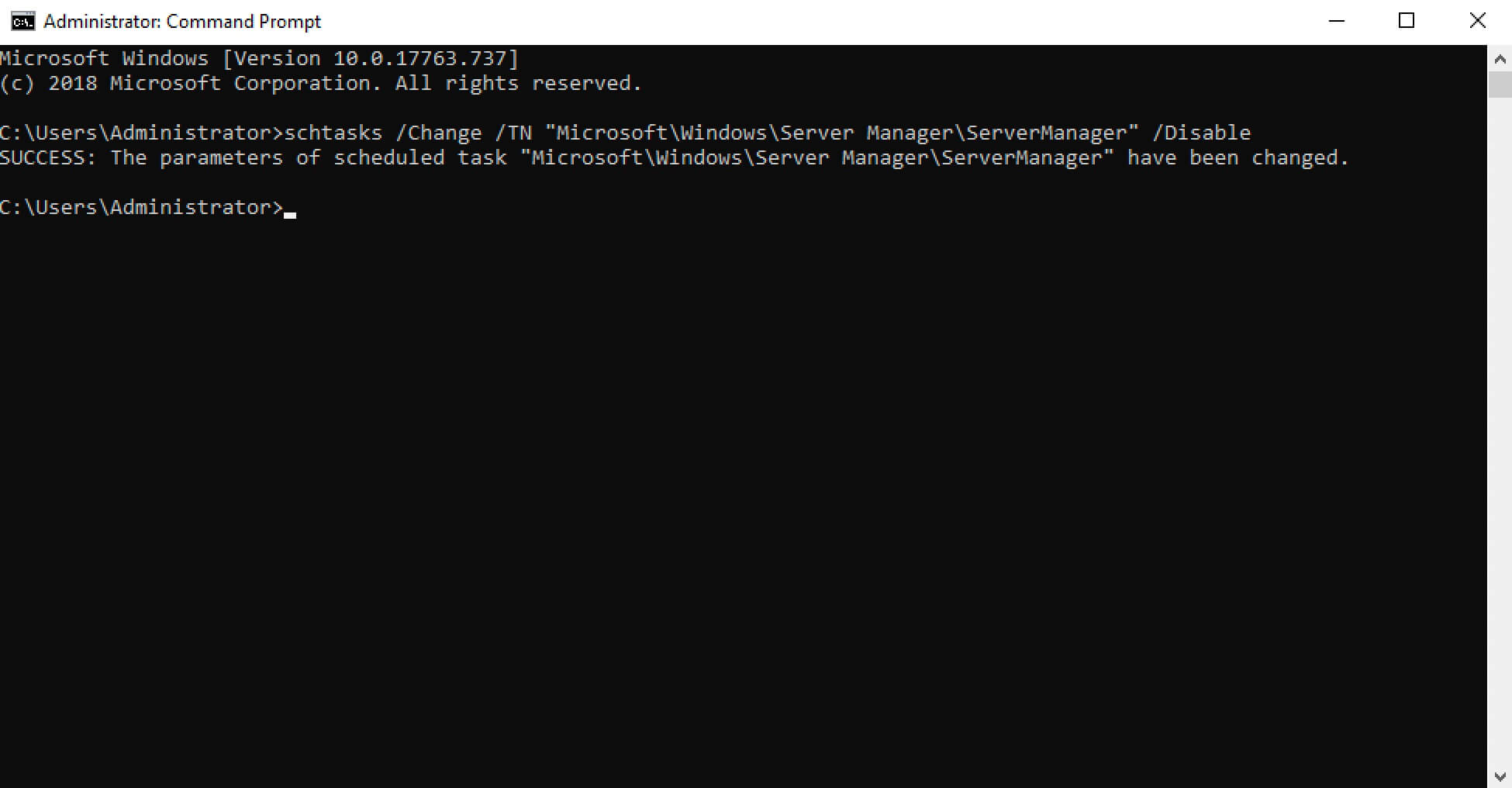
You can also disable the task that is responsible for automatically starting Server Manager using Windows PowerShell.
On the keyboard, press the key combination “Win” and “x” and in the menu that opens, select “Windows PowerShell (Admin)”.
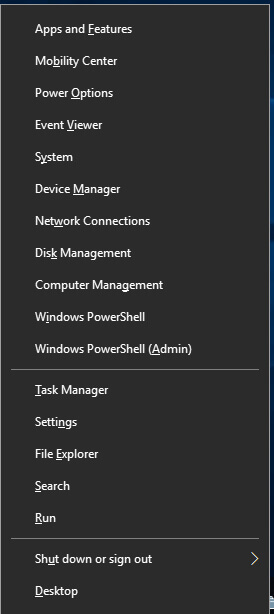
Disable Server Manager autostart using the command:
Get-ScheduledTask -TaskName ServerManager | Disable-ScheduledTask
Server Manager will no longer start automatically.

My Courses
🎓 Dive into my comprehensive IT courses designed for enthusiasts and professionals alike. Whether you’re looking to master Docker, conquer Kubernetes, or advance your DevOps skills, my courses provide a structured pathway to enhancing your technical prowess.
My Services
💼 Take a look at my service catalog and find out how we can make your technological life better. Whether it’s increasing the efficiency of your IT infrastructure, advancing your career, or expanding your technological horizons — I’m here to help you achieve your goals. From DevOps transformations to building gaming computers — let’s make your technology unparalleled!
Refill My Coffee Supplies
💖 PayPal
🏆 Patreon
💎 GitHub
🥤 BuyMeaCoffee
🍪 Ko-fi
Follow Me
🎬 YouTube
🐦 Twitter
🎨 Instagram
🐘 Mastodon
🧵 Threads
🎸 Facebook
🧊 Bluesky
🎥 TikTok
🐈 GitHub
Is this content AI-generated?
Nope! Each article is crafted by me, fueled by a deep passion for Docker and decades of IT expertise. While I employ AI to refine the grammar—ensuring the technical details are conveyed clearly—the insights, strategies, and guidance are purely my own. This approach may occasionally activate AI detectors, but you can be certain that the underlying knowledge and experiences are authentically mine.
